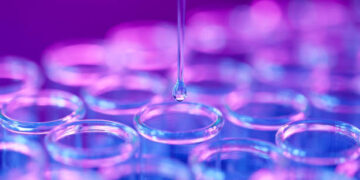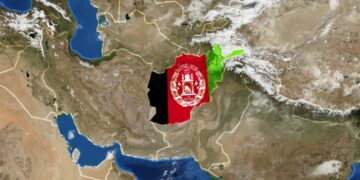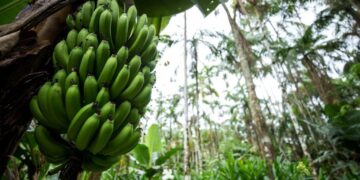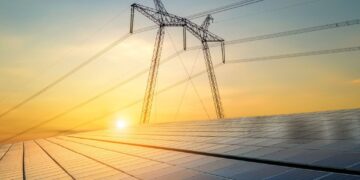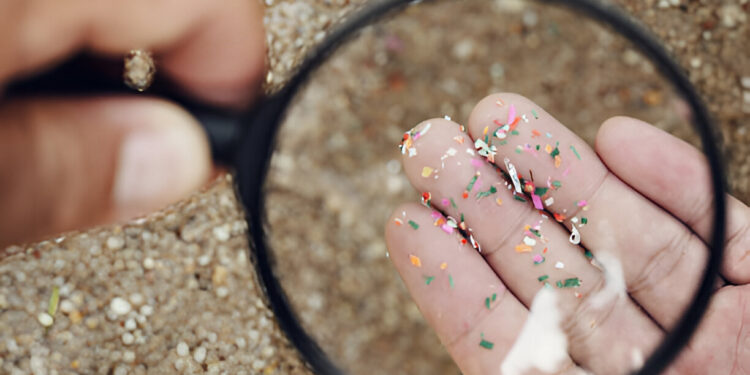Adenike A. Akinsemolu 1,2
1Institute of Advanced Studies, University of Birmingham, United Kindgom B15 2TT
2The Green Institute, Ondo, Ondo State, Nigeria 351101
*Corresponding Author Email: a.akinsemolu@bham.ac.uk …
Highlights
- 350 million metric tons of plastic waste are generated annually
- Microplastics are plastic particles whose size is less than 5mm
- Microplastics can be degraded organically
- Microplastics are a threat to the natural environment
- Microplastics have been found in human lung tissue and sputum
Graphical Abstract
Abstract
Since the development of the first synthetic plastic with the potential for mass production in 1907, plastic has gone from a wonder solution in the packaging, building and construction, electrical and electronics, consumer products, and transportation industries to an environmental and sustainability hazard. Over the past decade, global concern over the impact of plastic pollution has extended to microplastics. Though small in size (1mm-5mm), microplastics are causing extensive damage to the natural environment. They have been isolated as contaminants in soil, tap water, oceans and their ecosystems, plants, animals, and human beings. As microplastics continue to accumulate in different ecosystems, research and studies on their impact on the environment, ways of detecting them, and strategies to prevent their accumulation in the environment are on the rise in efforts to understand their biological and ecological implications. This paper reviews existing knowledge on the environmental impacts of microplastics, their detection techniques, and mitigation strategies. The occurrence of microplastics in marine environments, on land, and in plant, animal, and human cells will be elucidated. Different analytical methods used for the sampling and characterization of microplastics in the environment will be highlighted and current and potential methods for the mitigation of the threat the element poses to the environment discussed. The synthesis of existing knowledge will be used to derive recommendations for future studies to fill knowledge gaps on microplastics.
Keywords: Microplastics, detection techniques, mitigation, ecosystem, pollution.
1. Introduction
In the 1950s, only a few tons of plastic were produced. By 2018, close to 400 million metric tons of plastic were being produced annually (Amobonye et al., 2021). Of these, 350 million metric tons are wasted every year, with this number projected to rise to one billion tons of plastic waste by 2060 if effective mitigation strategies are not adopted (Alves, 2023). Most of this waste ends up in landfills, oceans, or distributed across different ecosystems. Plastic waste is not biodegradable but over time, it crumbles and disintegrates into smaller chunks that eventually weather into micro and nano-sized fragments of plastic known as microplastics (Amobonye et al., 2021). The most common sources of microplastics in the environment include plastic pellets and fragments from degraded industrial and consumer plastic products, fibers from washing machines, microbeads from skin and hair products and other personal care products, microbeads from paint, and fragments from wastewater treatment plants, rubber roads, artificial turf, and wear from tires (An et al., 2020). Since most of these products are essential items used daily, microplastic pollution is pervasive, posing significant threats to the environment, including contaminating oceans, causing the mortality and injury of terrestrial, aquatic, and human health through plastic aggregation and digestion, and impairing soil and water quality, which affects plant and microbe growth and survival (Lamichhane et al., 2023). Following the global recognition and concern that the problem of microplastic pollution has garnered over the past decade, there is an abundant pool of literature discussing the sources of microplastics, their impact on the environment, and potential solutions to mitigate their negative effects. In this study, we reviewed existing literature on microplastics and evaluated three aspects; namely their environmental impact, techniques to detect microplastics across aquatic and terrestrial ecosystems, and mitigation strategies to reduce microplastic pollution.
2. Methodology
This study employed a systematic review to provide a comprehensive assessment of the current state of literature on the environmental impact, detection techniques, and mitigation strategies for microplastic pollution. Data for this study was extracted from Elsevier and Scopus, which were selected for their comprehensive collections of journals on the topic of study. The keywords “microplastics,” “environmental impact,” “detection techniques,” “mitigation,” “microplastic pollution,” and “microplastic contamination” were used to identify literature and studies on the topic of study. The results of the initial search were schemed to determine their relevance to the topic of study and eliminate duplicates. The remaining sources were read in depth and the relevant information extracted and synthesized to inform the assertions made in the current study and form the basis for further inquiry.
3. Microplastics
Microplastics are among the leading contaminants of marine and terrestrial environments across the world. Their negative impacts have been studied extensively by recent studies, which found that the externalities of microplastic production and use extend beyond the environment to plants, microorganisms, animals, and human beings, posing public health threats in addition to their threats to distinct ecosystems (Li et al., 2022; Yao et al., 2022; Guo et al., 2020). Dissanayake et al. (2022) identify a widely used classification of microplastics in three categories based on their size. According to the classification, plastic particles larger than 5mm are macroplastics while plastic particles whose size falls between 5mm and 1mm are microplastics. Comparatively, plastic particles whose size is less than 1mm are nanoplastics. This classification has been adopted by various studies, which advance a standard definition of microplastics as plastic particles whose size is less than 5mm (Yao et al., 2022).
Most studies categorize microplastics into primary and secondary microplastics depending on their source. Primary microplastics are manufactured as micrometer-sized particles (Haque & Fan, 2023). Essentially, primary microplastics were purposefully generated in a size that falls between 1mm and 5mm and entered the ecosystem in which they were detected in the same form (Kefer, Miesbauer & Langowski, 2021). They include the exfoliator beads used in facial scrubs and cleansers, plastic pellets used and sparkles used in nail polish and other beauty products, plastic pellets used for drug delivery, plastic granules used for film production, and plastic particles in several industrial applications (Haque & Fan, 2023; Kefer, Miesbauer & Langowski, 2021, Lehtiniemi et al., 2018). Miniscule plastic particles such as microfibers from commercial and household laundry activities, dust and particles released during the manufacture of plastic, and micro-particles from the wear and tear of plastic items such as food packaging, and other household plastic items are all examples of primary microplastics. Secondary microplastics, on the other hand, are fragments of larger plastic items (Lehtiniemi et al., 2018). The degradation of plastic litter in landfills, oceans, shorelines, and other common dumping places of plastics to yield secondary microplastics is well-documented (Haque & Fan, 2023; Lehtiniemi et al., 2018).
3.1 Environmental Impacts
The environmental impact of microplastics is pervasive as evidenced by their detrimental effects on the soil, the aquatic environment, and the atmosphere (Gosh et al., 2023). Microplastic pollution in aquatic environments takes several forms. First, microplastics have been detected in marine sediments and in the sand on beaches along the world’s oceans (Vaid, Mehra & Gupta, 2021). According to sediment characterization reports, the most common microplastics found in sediments and beaches include polymers such as polyester, polystyrene, and polyurethane. The reports blame recreational activities, port and industrial activities, tourism and fishing, water transport, poorly-managed disposal of plastic waste, and the discharge of untreated wastewater for the microplastic contamination in the aquatic environment (Vaid, Mehra & Gupta, 2021). Second, microplastics have been detected in the cells of aquatic life, posing a threat to their overall health and life. Microplastics have been detected in some stages of different aquatic food chains. Fish in lower levels of the aquatic food chain, for instance, particularly omnivore fish that feed on different substances, ingest microplastics. While some of the ingested microplastics may be excreted by the fish, others build up along their gastrointestinal tract, causing blockages and other forms of damage. Other particles enter other organs such as the liver and reproductive organs, damaging their function and impairing overall growth (Bhuyan, 2022). In fact, ingesting microparticles is positively associated with retardation and premature mortality in fish. The consumption of fish that is contaminated with microplastics is hazardous to carnivorous fish or human beings (Bhuyan, 2022; Mahu et al., 2023). The occurrence of microplastics in water has been confirmed in tap water, wastewater, fresh and salty water lakes, rivers, and oceans (Ricciardi et al., 2021).
While microplastics have been detected in millions of tons in different marine ecosystems, they are more concentrated in terrestrial ecosystems. Soil ecosystems, for instance, have between four and twenty-three times more microplastic particles compared to aquatic ecosystems (Behera & Das, 2023). Microplastics change the physical properties of soil, including its structure, porosity, moisture content, air and aeration, and chemical properties (Wen et al., 2022). In addition to changing its physical properties, microplastics alter the physiochemical properties of soil. For instance, microplastics raise soil pH through their interaction with its organic and inorganic components (Li et al., 2023). The impact of changes in the physical and physiochemical properties of soil affect plant germination, growth, and ability to draw nutrients from the soil, the reproduction, survival, and activity of microorganisms, and the soil’s ability to aggregate. Together, these effects of microplastics on soil ecosystems threaten terrestrial vegetation and the survival of animals and human beings who depend on the soil to grow food, support the growth of trees and vegetation to sequester carbon, filter out toxins from water, and help prevent natural disasters such as floods (Gavrilescu, 2021; Silva et al., 2023; Brempong et al., 2023).
Third, microplastics have been detected in the atmosphere. A 2021 study confirmed the presence of microplastics in human lung tissues and determined that they were inhaled from the air (Amato-Lourenco et al., 2021). A second study confirmed their presence in the sputum of patients with respiratory diseases (Lu et al., 2022). Plastics often include additives designed to improve their properties. These additives, which may contain toxic substances, are inhaled together with microplastics and have been detected in multiple pathways, including skin contact, ingestion, and inhalation (Lombardi et al., 2022; Li et al., 2023). Once inhaled, ingested, or absorbed into the body through the skin, microplastics cause inflammation, exacerbate lung and respiratory diseases, and have been associated with carcinogenic effects (Lu et al., 2022; Lombardi et al., 2022).
3.2 Detection Techniques
The discovery of microplastics in different ecosystems and their significant externalities have sparked research and the development of methods of detecting the substances in the environment. Microplastic detection techniques have been studied widely over the past decade, as evidenced by the wide body of literature on the topic. Mariano et al. (2021) recognize the miniscule size of micro and nanoplastics in their suggestion of microscopical techniques such as fluorescence, scanning electron, and atomic force microscopy as the ideal microplastic detection techniques. Notably, the study recognizes the limitations of each of these techniques. For instance, they acknowledge that stereo microscopy is a fast method of detecting microplastics and identifying them based on their shape, size, and color (Mariano et al., 2021). However, they concede that the detection technique merely confirms the presence of microplastics in the environment but does not determine the type or nature of the plastic and could miss smaller particles. Their exploration of other detection techniques and their disadvantages is equally comprehensive. While other studies’ evaluation of microplastic detection techniques vary in scope and detail, the overall evaluation of the techniques is comprehensive. Other studies differentiate ways of detecting microplastics by the type of technique while others discuss the techniques based on the ecosystems for which they are most appropriate. To this end, Chen et al. (2020) focus on techniques for detecting microplastics in the atmosphere, which are relatively unexplored by existing literature. They identify passive atmospheric deposition and active pumped samplers and evaluate the potential for the adaptation of detection techniques designed for the detection of microplastics in terrestrial and aquatic ecosystems (Chen, et al., 2020). Comparatively, Prata et al. (2019) focus on microplastic detection techniques in water and sediment. They highlight sample collection methods, including pumps, nets, and sediment collection, before discussing microplastic detection techniques. Common techniques include sieving and filtration, density separation, which uses floatation to identify microplastics in water and flow cytometry, which detects microplastics and determines their quantity in water samples (Prata et al., 2019).
Notably, the literature on microplastic detection techniques extends to the analysis of microplastics to determine their type and origin. For instance, Huang, Hu, and Wang (2022) identify a wide range of methods of analyzing microplastics detected in the environment, including visual analysis, dynamic light scattering, thermal analysis, flow cytometry, and scanning electron microscopy. Similarly, the challenges of detecting and quantifying microplastics in different ecosystems are documented. A common challenge is the size of microplastics, which hinders their identification, quantification, and analysis, particularly since the majority of the analytic instruments used on plastics were not designed for small or nanoparticles (Adhikari et al., 2021). Second, the distribution of microplastics is not homogenous (Kye et al., 2023). This poses a challenge in sample collection and the determination of the level of environmental concentration of microplastics, creating a potential detection and quantification bias. Nevertheless, the detection of microplastics in different ecosystems and their analysis to determine their origin is crucial in the tracing of microplastics to their source, providing valuable information for the determination of potentially effective mitigation strategies.
3.3 Mitigation Strategies
Literature on the mitigation of microplastics in the environment is comprehensive and focuses on all angles of mitigation, including policy, actionable strategies to prevent microplastics from entering the environment, ways of removing microplastics from different ecosystems through degradation, and waste management approaches. The proposed mitigation strategies target the overarching solution of creating a microplastics-free environment. Chen et al. (2022) propose recycling and the degradation of plastic waste as an effective microplastic mitigation strategy. Their proposed action plans include the organic degradation of microplastics into non-toxic or less toxic substances and the upcycling of plastic waste into other products. The feasibility of upcycling plastic waste has been tested and proven to be cost-effective, environmentally friendly, and effective in yielding high-value-added products (Hussain et al., 2023). Similarly, the feasibility of the use of microbes to degrade polymers has been evaluated extensively and confirmed (Tania & Anand, 2023). Comparatively, Hettiarachchi and Meegoda (2023) propose a policy approach to preventing microplastic pollution through proper waste management approaches, principally organic composting to degrade the plastics that are in circulation. However, as the study concedes, more data is needed to accurately determine the true extent of microplastic pollution, track the movement of microplastics from their manufacture to the atmosphere, water, and soil, and evaluate the potential of different mitigation efforts to reduce microplastics. In addition to policy and waste management, literature on mitigating microplastic pollution has focused on source-specific strategies, often introducing solutions across different stages in the lifecycle of the microplastics in question. For instance, to reduce the release of microfibers from domestic laundry activities into wastewater and eventually into water sources, one of the featured studies suggests a series of interventions, beginning with the manufacture of fibers with higher tenacity, elongation, uniformity, and staple length to the production of yarn with higher elongation and tensile strength, biopolished fabrics with less floating structures and higher cover factor, and garments with hemmed edges and filament-based sewing threats. In the laundry stage, comprehensive washing parameters, including the use of low alkaline liquid detergents, lower washing temperatures and durations, and lower spin-speeds, and the use of front-loading washing machines were found to reduce the number of microfibers or microplastics released (Periyasamy, 2023). Such source-specific strategies require the integration of other mitigation strategies, such as waste-water management policies to address microplastic pollution in all stages of the pollutants’ lifecycle. For instance, filtration using stainless steel screening and filtration chambers is proposed as a potential solution to microplastic pollution from ballast water transport (Naik et al., 2021). However, to be effective, the solution requires supplementation through regular ocean cleaning to fully filter out microplastics. The use of alternatives such as biopolymers and the bioengineering of plastics to make them biodegradable has also been fronted as a potential solution to microplastic pollution and contamination (Prapanchan et al., 2023).
4. Recommendations
The comprehensive literature on microplastics and their negative impact on the environment informs the following recommendations on the three key themes areas of this study:
The pervasive environmental impact of microplastics is a threat to the survival of aquatic life, plant germination and growth, the natural environment’s ability to sequester carbon, and the quality and safety of drinking water. While several studies have been undertaken to determine the extent of the incidence of microplastics in the environment, the manifestations of their contamination in different ecosystems are not widely explored. Therefore, further studies on the environmental impact of microsystems on the environment could focus on the structural, sensory, and chemical/physical changes in the natural environment that signal microplastic pollution. Potential areas of study include changes in aquatic vegetation, the size, population, and symptoms observed in aquatic animals, and changes in the visible properties of soil that is contaminated by microplastics. These proposed directions for future research will raise awareness of microplastic pollution, allow indigenous communities to take advantage of traditional knowledge on changes in their ecosystems to detect microplastic pollution and contamination, and enrich existing knowledge on the environmental impact of microplastics.
The rising concern over microplastic pollution has been accompanied by a growing interest in different ways of detecting the presence of microplastics in the environment. The resulting advancements, range from simple methods such as filtering water to isolate microplastics to advanced detection techniques such as microscopic approaches that identify micro and nanoplastics that are too miniscule to be seen by the human eye. One element that was missing notably from the existing detection techniques is the integration of indigenous knowledge in the development of the techniques. Future studies can explore the potential for the involvement of local communities in different ecosystems in the detection of microplastic pollution in their natural environment and in the development of mitigation techniques.
5. Conclusion
Since the term microplastics was coined in 2004, extensive literature and research on their environmental impacts, detection techniques, and mitigation strategies have been published. The literature identifies the negative effects of microplastics on different ecosystems, including aquatic and terrestrial ecosystems, follows advancements in ways of detecting microplastics on land, in water, and in the atmosphere, and evaluates ways of preventing or reducing their prevalence in the environment. As the projected volume of microplastics and general plastic waste continues to rise, future research should focus on integrated mitigation strategies and integrated detection techniques to reduce the negative impacts of microplastics in the environment.
Author(s) Summary
Acknowledgements
The author will like to thank Professor Damilola Olawuyi for his intellectual guidance and unwavering support.
Funding
No funding received for this work.
Availability of Data and Material
All data are open sources and available for all to consider. Any further information can be provided on a request by the corresponding author. Please consider referring the author and article when utilizing parts of the published article by Springer.
Author(s) Contribution
A.A conceived the study, drafted the outline of manuscript and wrote the manuscript.
Competing Interest
The author declare that they have no competing interests.
References
Adhikari, S., Kelkar, V., Kumar, R., & Halden, R. U. (2022). Methods and challenges in the detection of microplastics and nanoplastics: a mini‐review. Polymer International, 71(5), 543-551. [Google Scholar] [CrossRef]
Alves, B. (2023). Plastic Waste Worldwide – Statistics & Facts. Statista. Retrieved on November 25, 2023 from [Website].
Amato-Lourenco, L. F., Oliveira, R. C., Junior, G. R., Galvao, L. D. S., Ando, R. A., & Mauad, T. (2021). Microplastics inhalation: evidence in human lung tissue. European Respiratory Journal. [Google Scholar] [CrossRef]
Amobonye, A., Bhagwat, P., Raveendran, S., Singh, S., & Pillai, S. (2021). Environmental impacts of microplastics and nanoplastics: a current overview. Frontiers in Microbiology, 12, 3728. [Google Scholar][CrossRef]
An, L., Liu, Q., Deng, Y., Wu, W., Gao, Y., & Ling, W. (2020). Sources of microplastic in the environment. Microplastics in terrestrial environments: Emerging contaminants and major challenges, 143-159. [Google Scholar] [CrossRef]
Behera, S., & Das, S. (2023). Environmental impacts of microplastic and role of plastisphere microbes in the biodegradation and upcycling of microplastic. Chemosphere, 138928. [Google Scholar] [CrossRef]
Bhuyan, M. S. (2022). Effects of microplastics on fish and in human health. Frontiers in Environmental Science, 10, 250. [Google Scholar][CrossRef]
Brempong, M. B., Amankwaa-Yeboah, P., Yeboah, S., Owusu Danquah, E., Agyeman, K., Keteku, A. K., & Adomako, J. (2023). Soil and water conservation measures to adapt cropping systems to climate change facilitated water stresses in Africa. Frontiers in Sustainable Food Systems, 6, 1091665. [Google Scholar][CrossRef]
Chen, G., Fu, Z., Yang, H., & Wang, J. (2020). An overview of analytical methods for detecting microplastics in the atmosphere. Trends in Analytical Chemistry, 130, 115981. [Google Scholar] [CrossRef]
Chen, J., Wu, J., Sherrell, P. C., Chen, J., Wang, H., Zhang, W. X., & Yang, J. (2022). How to build a microplastics‐free environment: strategies for microplastics degradation and plastics recycling. Advanced Science, 9(6), 2103764. [Google Scholar] [CrossRef]
Dissanayake, P. D., Kim, S., Sarkar, B., Oleszczuk, P., Sang, M. K., Haque, M. N., & Ok, Y. S. (2022). Effects of microplastics on the terrestrial environment: a critical review. Environmental Research, 209, 112734. [Google Scholar] [CrossRef]
Gavrilescu, M. (2021). Water, soil, and plants interactions in a threatened environment. Water, 13(19), 2746. [Google Scholar] [CrossRef]
Ghosh, S., Sinha, J. K., Ghosh, S., Vashisth, K., Han, S., & Bhaskar, R. (2023). Microplastics as an emerging threat to the global environment and human health. Sustainability, 15(14), 10821. [Google Scholar] [CrossRef]
Guo, J. J., Huang, X. P., Xiang, L., Wang, Y. Z., Li, Y. W., Li, H., & Wong, M. H. (2020). Source, migration and toxicology of microplastics in soil. Environment international, 137, 105263. [Google Scholar] [CrossRef]
Haque, F., & Fan, C. (2023). Fate and Impacts of Microplastics in the Environment: Hydrosphere, Pedosphere, and Atmosphere. Environments, 10(5), 70. [Google Scholar] [CrossRef]
Hettiarachchi, H., & Meegoda, J. N. (2023). Microplastic pollution prevention: the need for robust policy interventions to close the loopholes in current waste management practices. International journal of environmental research and public health, 20(14), 6434. [Google Scholar] [CrossRef]
Huang, Z., Hu, B., & Wang, H. (2023). Analytical methods for microplastics in the environment: a review. Environmental Chemistry Letters, 21(1), 383-401. [Google Scholar] [CrossRef]
Hussain, I., Aitani, A., Malaibari, Z., Alasiri, H., Naseem Akhtar, M., Fahad Aldosari, O., & Ahmed, S. (2023). Chemical Upcycling of Waste Plastics to High Value‐Added Products via Pyrolysis: Current Trends, Future Perspectives, and Techno‐Feasibility Analysis. The Chemical Record, 23(4), e202200294. [Google Scholar] [CrossRef]
Kefer, S., Miesbauer, O., & Langowski, H. C. (2021). Environmental microplastic particles vs. engineered plastic microparticles—a comparative review. Polymers, 13(17), 2881. [Google Scholar] [CrossRef]
Kye, H., Kim, J., Ju, S., Lee, J., Lim, C., & Yoon, Y. (2023). Microplastics in water systems: A review of their impacts on the environment and their potential hazards. Heliyon. [Google Scholar] [CrossRef]
Lamichhane, G., Acharya, A., Marahatha, R., Modi, B., Paudel, R., Adhikari, A., … & Parajuli, N. (2023). Microplastics in environment: global concern, challenges, and controlling measures. International Journal of Environmental Science and Technology, 20(4), 4673-4694. [Google Scholar] [CrossRef]
Lehtiniemi, M., Hartikainen, S., Näkki, P., Engström-Öst, J., Koistinen, A., & Setälä, O. (2018). Size matters more than shape: Ingestion of primary and secondary microplastics by small predators. Food webs, 17, e00097. [Google Scholar] [CrossRef]
Li, Y., Tao, L., Wang, Q., Wang, F., Li, G., & Song, M. (2023). Potential health impact of microplastics: a review of environmental distribution, human exposure, and toxic effects. Environment & Health, 1(4), 249-257. [Google Scholar] [CrossRef]
Li, Z., Yang, Y., Chen, X., He, Y., Bolan, N., Rinklebe, J., & Sonne, C. (2022). A discussion of microplastics in soil and risks for ecosystems and food chains. Chemosphere, 137637. [Google Scholar] [CrossRef]
Lombardi, G., Di Russo, M., Zjalic, D., Lanza, T., Simmons, M., Moscato, U., & Chiara, C. (2022). Microplastics inhalation and their effects on human health: a systematic review. European Journal of Public Health, 32(Supplement_3), ckac131-152. [Google Scholar] [CrossRef]
Lu, K., Zhan, D., Fang, Y., Li, L., Chen, G., Chen, S., & Wang, L. (2022). Microplastics, potential threat to patients with lung diseases. Frontiers in Toxicology, 4, 958414. [Google Scholar] [CrossRef]
Mahu, E., Datsomor, W. G., Folorunsho, R., Fisayo, J., Crane, R., Marchant, R., & Gordon, C. (2023). Human health risk and food safety implications of microplastic consumption by fish from coastal waters of the eastern equatorial Atlantic Ocean. Food Control, 145, 109503. [Google Scholar] [CrossRef]
Mariano, S., Tacconi, S., Fidaleo, M., Rossi, M., & Dini, L. (2021). Micro and nanoplastics identification: classic methods and innovative detection techniques. Frontiers in toxicology, 3, 636640. [Google Scholar] [CrossRef]
Naik, R. K., Chakraborty, P., D’Costa, P. M., Anilkumar, N., Mishra, R. K., & Fernandes, V. (2021). A simple technique to mitigate microplastic pollution and its mobility (via ballast water) in the global ocean. Environmental Pollution, 283, 117070. [Google Scholar] [CrossRef]
Periyasamy, A. P. (2023). Environmentally Friendly Approach to the Reduction of Microplastics during Domestic Washing: Prospects for Machine Vision in Microplastics Reduction. Toxics, 11(7), 575. [Google Scholar] [CrossRef]
Prapanchan, V. N., Kumar, E., Subramani, T., Sathya, U., & Li, P. (2023). A Global Perspective on Microplastic Occurrence in Sediments and Water with a Special Focus on Sources, Analytical Techniques, Health Risks, and Remediation Technologies. Water, 15(11), 1987. [Google Scholar][CrossRef]
Prata, J. C., da Costa, J. P., Duarte, A. C., & Rocha-Santos, T. (2019). Methods for sampling and detection of microplastics in water and sediment: a critical review. Trends in Analytical Chemistry, 110, 150-159. [Google Scholar] [CrossRef]
Ricciardi, M., Pironti, C., Motta, O., Miele, Y., Proto, A., & Montano, L. (2021). Microplastics in the aquatic environment: occurrence, persistence, analysis, and human exposure. Water, 13(7), 973. [Google Scholar] [CrossRef]
Silva, T. P., Bressiani, D., Ebling, É. D., & Reichert, J. M. (2023). Best management practices to reduce soil erosion and change water balance components in watersheds under grain and dairy production. International Soil and Water Conservation Research. [Google Scholar] [CrossRef]
Tania, M., & Anand, V. (2023). The implementation of microbes in plastic biodegradation. Journal of Umm Al-Qura University for Applied Sciences, 1-11. [Google Scholar] [CrossRef]
Vaid, M., Mehra, K., & Gupta, A. (2021). Microplastics as contaminants in Indian environment: a review. Environmental Science and Pollution Research, 1-28. [Google Scholar] [CrossRef]
Wen, X., Yin, L., Zhou, Z., Kang, Z., Sun, Q., Zhang, Y., … & Jiang, C. (2022). Microplastics can affect soil properties and chemical speciation of metals in yellow-brown soil. Ecotoxicology and Environmental Safety, 243, 113958. [Google Scholar] [CrossRef]
Wojnowska-Baryła, I., Bernat, K., & Zaborowska, M. (2022). Plastic waste degradation in landfill conditions: the problem with microplastics, and their direct and indirect environmental effects. International Journal of Environmental Research and Public Health, 19(20), 13223. [Google Scholar][CrossRef]
Yao, Y., Lili, W., Shufen, P., Gang, L., Hongmei, L., Weiming, X., & Dianlin, Y. (2022). Can microplastics mediate soil properties, plant growth and carbon/nitrogen turnover in the terrestrial ecosystem? Ecosystem Health and Sustainability, 8(1), 2133638. [Google Scholar] [CrossRef]
About this Article
Cite this Article
APA
Akinsemolu, A. A. (2023). Microplastics: Environmental Impacts, Detection Techniques, and Mitigation Strategies. SustainE, 1(2), 1–25. https://doi.org/10.55366/suse.v1i2.2
Chicago
Akinsemolu, Adenike A. “Microplastics: Environmental Impacts, Detection Techniques, and Mitigation Strategies.” SustainE 1, no. 2 (December 1, 2023): 1–25. https://doi.org/10.55366/suse.v1i2.2.
Received
10 October 2023
Accepted
25 November 2023
Published
1 December 2023
Corresponding Author Email: a.akinsemolu@bham.ac.uk
Disclaimer: The opinions and statements expressed in this article are the authors’ sole responsibility and do not necessarily reflect the viewpoints of their affiliated organizations, the publisher, the hosted journal, the editors, or the reviewers. Furthermore, any product evaluated in this article or claims made by its manufacturer are not guaranteed or endorsed by the publisher.
Distributed under Creative Commons CC-BY 4.0
Share this article
Use the buttons below to share the article on desired platforms.



